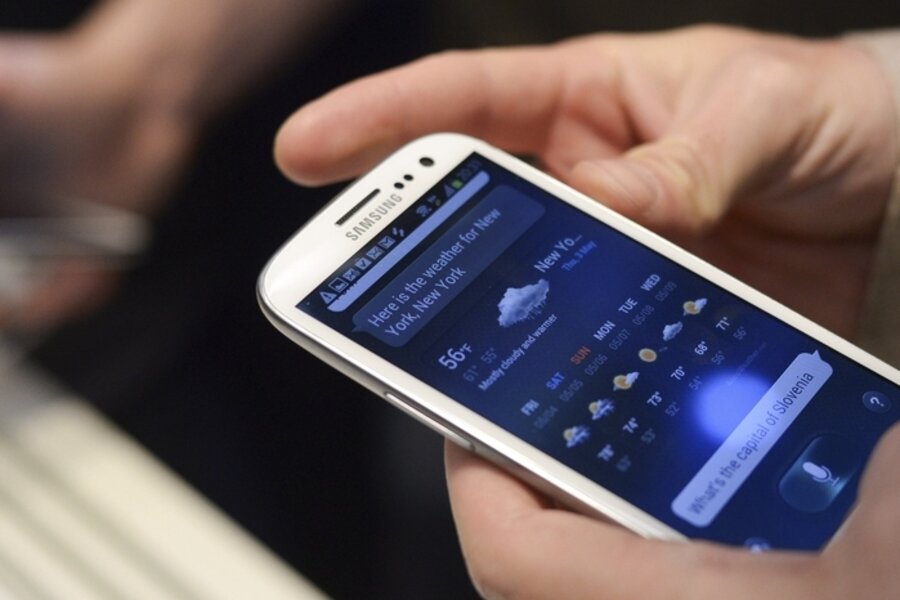Samsung unveils the Galaxy S III
Loading...
Seems like just yesterday -- er, eight months ago -- we were breathlessly reporting on the stateside arrival of the Samsung Galaxy S II. But the smart phone landscape changes quickly, and now its successor is here. In a "Mobile Unpacked" event in London on Thursday, Samsung unveiled the Galaxy S III handset -- a sleek slice of high-def goodness in 16GB, 32GB, and 64GB flavors.
Samsung's new flagship Android phone has an appropriately impressive spec sheet. A 4.8-inch HD Super AMOLED screen (720p resolution) promises exceptional contrast, with the caveat that it'll be a little less visible in sunlight. Take note: This screen is quite a bit bigger than the one found on the Galaxy S II, though it's nowhere near the size of Samsung's other recent release, the Galaxy Note.
There's a 1.4GHz quad-core Exynos processor at the heart of the Galaxy S III, and early reports from those lucky enough to spend time with the phone indicate that it is really, really, ridiculously fast. Mat Smith at Engadget notes, "Whizzing around the native apps and web browser was as pleasant as we expected, pinch-to-zoom pinged into action, while multimedia playback was effortless." We should add there there are some rumors that the US version -- which doesn't have an announced American price or carrier compatibility yet -- will rely on a dual-core Snapdragon chip, trading a bit of hardware muscle for 4G LTE compatibility.
As far as bells and whistles, the handset has an 8-megapixel back-facing camera -- apparently similar to the one found in its predecessor -- and also sports a micro-USB port and a microSD slot for removable memory. That latter feature is a rare treat these days; the lack of microSD expansion was one of the main criticisms of the Galaxy Nexus (the other -- the phone's relatively paltry battery life -- is also addressed here. The 2,100mAh battery should keep you going for quite awhile).
Samsung's also touting "natural interaction" features on the Galaxy S III -- for example, you can look up someone's contact details on the screen, then call them just by raising the phone to your ear. The front-facing camera will detect whether someone's looking at the phone and switch the screen on or off appropriately. And the handset features S Voice, a service that'll let you speak to take photos, navigate the music player, and otherwise control the phone. It's pretty clearly a competitor to a certain well-loved virtual assistant.
The Galaxy S III ships with Android 4.0 Ice Cream Sandwich, making it Samsung's third American handset (after the Galaxy Nexus on Verizon and the Nexus S 4G on Sprint) to run the OS right now -- although Samsung has promised (repeatedly!) that Ice Cream Sandwich will soon be available on other tablets and smart phones.
No word yet on price, but we know the phone will be available in Europe on May 29th, and will hit North America in June. What do you think of Samsung's latest and greatest? Share your kudos and gripes about the handset in the comments.
For more tech news, follow us on Twitter @venturenaut.






